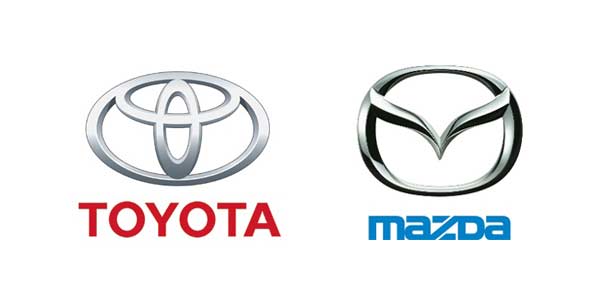Mazda & Toyota to Swap Green Technology, Including FCV

As emissions regulations continue to tighten around the world, Toyota and Mazda are considering expanding their current partnership to include the sharing of more fuel-saving technology. Specifically, the new agreement would involve the sharing of Toyota’s fuel-cell technology. In a surprising turn of events, that could mean we will see a Mazda FCV even before we see one from Honda.
The news of this latest “competitive cooperation” in the auto industry comes from Nikkei. We already knew that Mazda was planning to manufacture a Toyota-badged version of their all-new Mazda2 hatch sometime towards the end of this year in exchange for Toyota’s hybrid technology. Now, as emissions regulations tighten up and development of green technology becomes subsequently more expensive, the two automakers are looking to help each other out.

In exchange for Toyotas hydrogen fuel-cell vehicle technology, Mazda intends to provide Toyota with the mechanics behind their efficient petrol engine technology – SkyActiv. The result is a win-win arrangement for both automakers:
- Toyota gets better engines for their own portfolio (which have fallen behind the advancement of their hybrid counterparts, relatively speaking), AND increased proliferation of hydrogen technology.
- Mazda gets access to the world’s leading FCV technology – development of which they could never do on their own with their limited budget.
Toyota has already made some of their key hydrogen fuel-cell patents available for free to any and all of their competitors. Again, the reasoning is that the more automakers working on fuel-cell vehicles, the quicker the hydrogen refueling infrastructure can grow. As it stands, there are only 12 hydrogen refueling stations in the US.
Meanwhile, Mazda has about one tenth the R&D budget of Toyota, who just announced an $18.1 billion profit for the fiscal year. They’ve spent the past several years focused entirely on fuel-efficient conventional engines, which has left them sorely lacking in the electrification department. The pre-existing technology partnership has helped, but gaining Toyota’s FCV technology would really put them head-and-shoulders above many of their larger competitors.
Although nothing has been put in writing just yet, officials from both automakers have been cited saying that their partnership will only expand with time. In the future, Toyota and Mazda could continue sharing more parts, manufacturing and even commercial vehicles, in addition to green technology. The two automakers have very similar perspectives when it comes to manufacturing and development; they both want to sell simple, clean cars without any real flaws.


